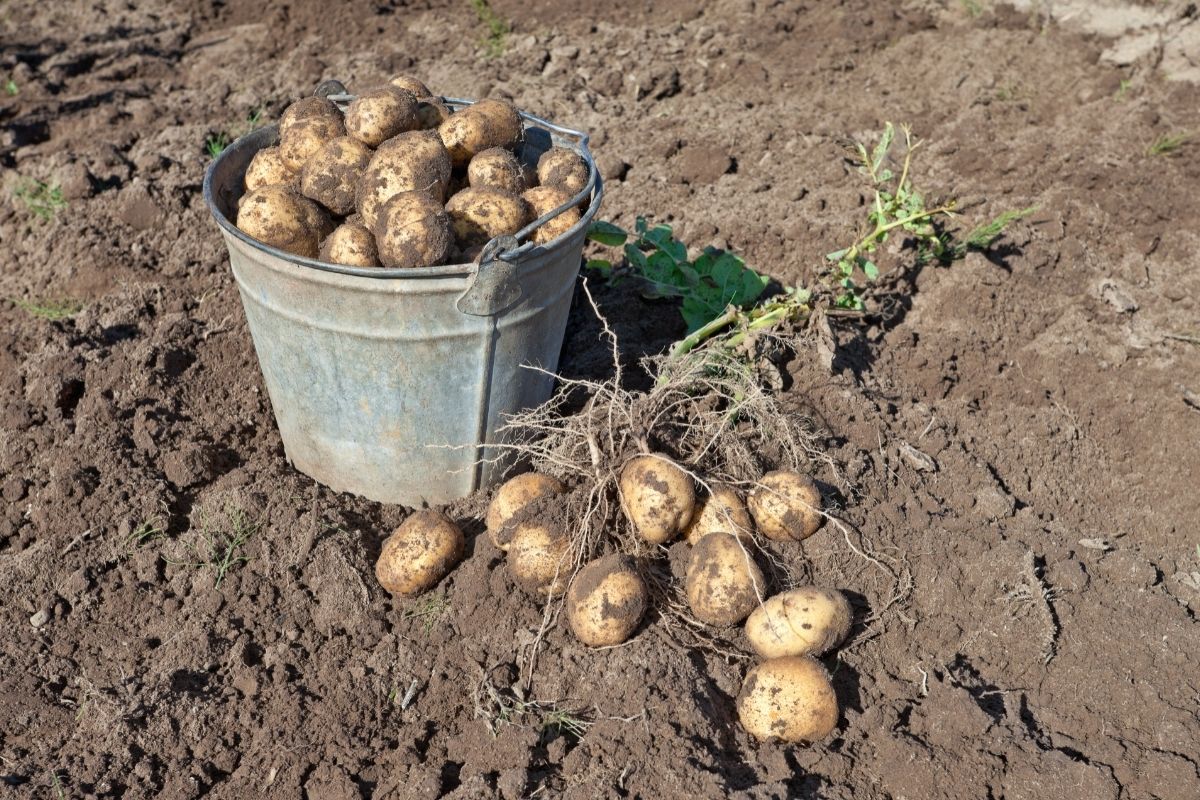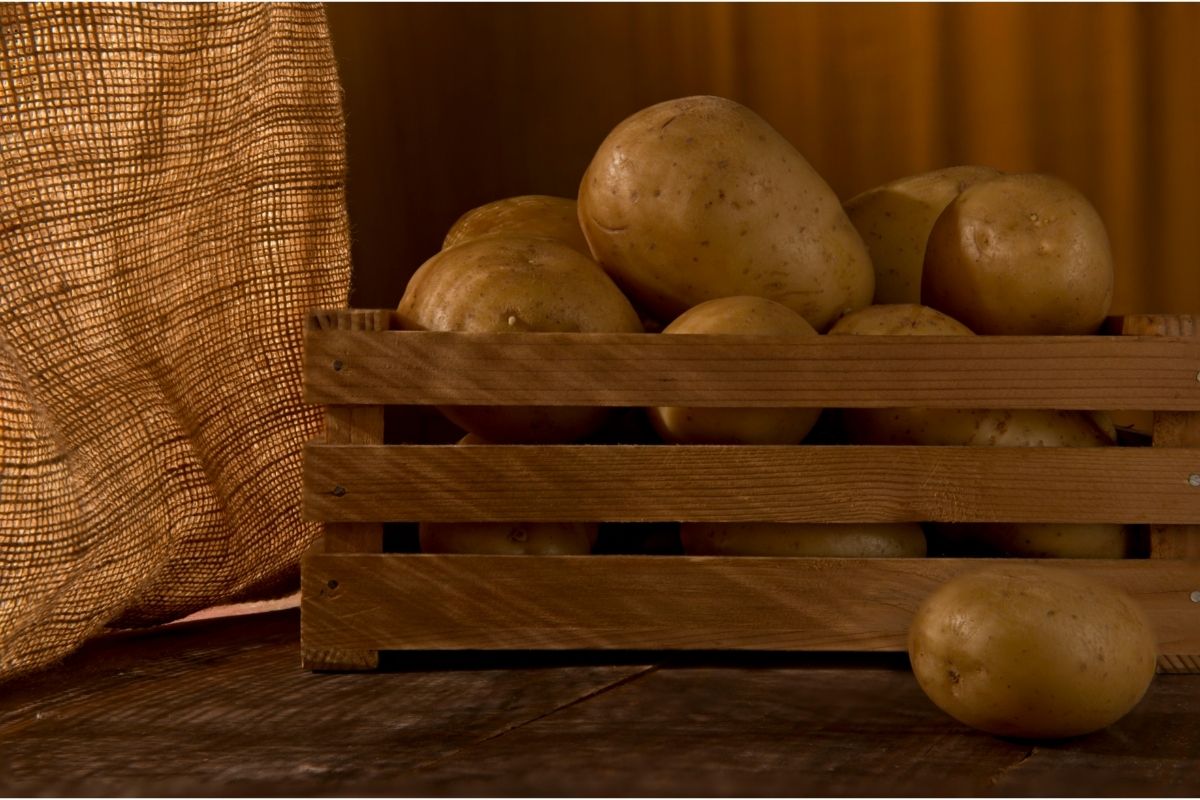Planting Potatoes
Potatoes do well in light, loose, slightly acidic, and well-drained soil. This article will guide you on how to plant potatoes.
Have you ever thought about planting potatoes in your garden? Well, Potatoes are easy to grow. They produce huge harvests. You need to learn to plant potatoes if you love them. Potatoes can grow in a raised bed, containers, pots, or unique grow bags. You can also plant potatoes in a small backyard.

How to Plant Potatoes. A Step-By-Step Guide
Planting potatoes is easy and fun. The following step-by-step guide will help you plant potatoes with a lot of ease and know the stages of potato growth.
Choose the Type of Seed Potatoes to Buy
The first step is to choose the seedling potato that suits your desires from the many varieties available. Then, you can pick them and learn how to plant red potatoes and how to plant Yukon gold potatoes as well.
Prepare the Potatoes for Planting
You should prepare the potatoes for planting at least one or two weeks in advance. At this time, put the seed potatoes where there is light. The temperatures here should be between 60 and 70 degrees Celcius (140-158 degrees Fahrenheit).
This temperature will help the seed potatoes to sprout. Before planting the seed potatoes, cut them into halves, ensuring that each part has at least two eyes. You should then allow components to dry before planting.
Prepare the Soil
Prepare the soil that will be best for your seedling potatoes. The best soil should be moist, well-drained, and slightly acidic. Prepare the soil well and add fertilizer. When you prepare the soil well, the potatoes will grow successfully.
You should also prepare to plant your potato seeds in a place with enough sunlight. They need to get sunlight at least six to eight hours a day.
Planting the Potatoes
Once the soil is ready, you can plant the seedling potato either in trenches or individual holes. The holes can be 6 inches (154 mm) deep and one foot apart in the rows. When planting the potatoes, ensure that the eyes are facing upward. After two weeks, you will be able to see some sprouts.
Care for the potato plants
As the potato plant grows, you should take care of them well. Ensure that they get a sufficient supply of water. However, you should avoid overwatering them. You should also weed the plants from time to time. When they grow to 12 inches (304 mm), you should begin mounding the soil.
Harvesting the potatoes
Many potato varieties take three months to be ready for harvesting. Harvesting of mature potatoes begins 21 days after potato veins have died. After harvesting, allow the potatoes to dry for two or three days to cure.
Storing the potatoes
After harvesting, wipe off the dirt on the potatoes and store them in a cool, dark, and dry area. Do not expose the potatoes to direct sunlight, making them develop green spots: These spots make the potatoes bitter.

When To Plant Potatoes
The time you decide to plant potatoes varies depending on where you live. Potatoes are excellent weather plants. If you live in a warm climate, what month do you plant potatoes? You can plant your potatoes in February.
If you live in cold areas, you can plant them during the Easter holiday. Therefore, the best time to plant potato seeds is during early spring.
For the best results, it’s advisable to plant them two or three weeks before your last frost date.
How to Water Potatoes
Potatoes need enough water, just like other plants. They grow successfully when they get a steady supply of water. Therefore, you should water your potato plants well, especially when it is very hot. The water should reach 8-10 inches (203-254mm) underground during watering.
However, you should avoid overwatering the potato plants during the first two weeks of planting. During this time, you can water them every five days. Then, when the plants are six to eight weeks old, you can water them every day. This is because, during this time, the plants are making new potatoes.
The water helps the potatoes grow bigger, taste better, and last longer when you store them. Potatoes that don’t get enough water supply will be fewer and smaller. They may also develop defects as they grow.
When are Potatoes Ready to Harvest?
Potatoes are ready to harvest when they reach the size you desire as the farmer. This is usually about 60-90 days from the date you planted them. At this time, the potatoes may be less than 2 inches (50mm) in diameter.
If you want to harvest bigger potatoes, you can gather them about 120 days after the day of planting. Some potato farmers wait for the soil around the potato plant stem to bulge before harvest. They believe that as the potatoes grow bigger, the soil around the plant bulges.
Which Type of Potato Should I Grow?
If you are planting potatoes for the first time, you should know that there are several potato varieties to choose from. You should also know how long potatoes take to grow. The choice you make will depend on several factors:
- Where you grow them: You can grow potatoes in containers or a garden-raised bed. If you are planting in a container, you should learn how to plant sprouted potatoes in a bucket or pot. This should make you consider choosing smaller varieties called fingerling potatoes. Their tubers take up little space. These potatoes include French Fingerling, Magic Molly, Pinto Gold, and Russian Banana.
- Time to maturity: This refers to the number of days that the potato plant will take to grow. When growing potatoes, you need to consider time to maturity before choosing the potato variety to plant. We can group potatoes into three depending on the time to maturity:
- Early season; these are fast maturing. Some take as little as 60-80 days after planting to mature. An example of this is the Red Norland potato. It takes 70 days to produce tubers.
- Mid-season; these potatoes take more time to mature. They produce tubers after 80-90 days of planting. An example is the Red Pontiac potato. It takes 80 days to develop.
- Late season; these take more than 90 days to mature. For example, the Princess Laratte potato. It takes up to 110 days to grow.
- Type of soil: You should select potatoes that can grow in the type of soil you have. Potatoes growing is perfect in sandy soil because the soil is loose and drains well. This kind of soil allows potato tubers to grow well without rotting.
The following table summarizes different potato types, their description, best uses and the varieties you can try:
| Potato type | Description | Best Uses | Varieties |
| Russet | This type of potato has a thick skin that is light brown in color. Its interior is yellow. | Baking, mashing, and roasting | Gold Rush, Burbank, Pioneer |
| Red | This type has a red skin and is white on the inside. | Soups, salads, roasting, and mashing | Norland Red, Strawberry Paw, Adirondack Red |
| White | The skin of these potatoes is buff-colored, and its sugar content is low. | Frying, mashing, salads, steaming and boiling | Superior, Kennebec, Elba |
| Yellow | This potato type has a golden skin and a yellow interior. | Grilling, roasting, mashing, and salads | Yukon Gold, Natascha, Yellow Finn |
| Blue / Purple | Blue/purple potatoes have colorful skins and a white interior; this color remains even after cooking. | Roasting, grilling, or salads | Elmer’s Blue, Magic Molly, Purple Majesty |
| Fingerling | This type comes in a variety of colors. They have an oblong shape and an earthy taste. | Frying, roasting, or salads | Cowhorn, Nosebag, Russian Banana, Red Thumb |
How Far Apart Should You Plant Potatoes
Potato spacing is critical. Plant your potatoes in rows, 6-8 inches (152-203mm) deep, spacing the rows 3 feet apart for the best results. You can decrease the spacing if your space is limited and grow only baby potatoes.
Potato Storage Information
- Store potatoes in a dark place. If you do not have a dark area, put your potatoes in a box with a lid or paper bags. Exposing them to light will make them green.
- Avoid storing potatoes with apples. Apples produce a gas that will spoil the potatoes.
- Never think of storing potatoes in the refrigerator.
- Do not wash potatoes unless you are ready to use them.

Our Top Potato Planting Tips
The following are some of the tips that will help you know how to plant and grow potatoes and get better harvests;
- For easier weeding, plant your potatoes two feet (610mm) apart.
- During planting, you need information on how far apart to plant potatoes. Make sure that the soil you use is acidic. For the best results, add some fertilizer to the soil.
- To avoid potato hilling, you need to be keen on how deep to plant seed potatoes. Plant your potatoes up to 9 inches (228mm) deep.
- When growing your potatoes in containers, ensure that you prepare your soil using one part each of cow manure, organic potting soil, and peat moss. You should also learn how to plant potatoes with roots.
How to Prevent Potato Blight
Potato blight (Phytophthora infestans) is a dangerous fungal disease that can wipe away your potato plantation. To reduce the chances of potato blight infection, avoid planting potatoes and other nightshade family members in the same piece of land without giving them an interval of three years. To add to that, make sure you uproot any potato plants that grow on the potato farm during the three-year interval.
Potatoes are easy to grow, and the secret to large harvests is soil preparation and watering. You can also learn how to plant potatoes from potatoes. You only need to follow the steps and tips provided in this article to ensure that you have substantial potato harvests in your garden.
